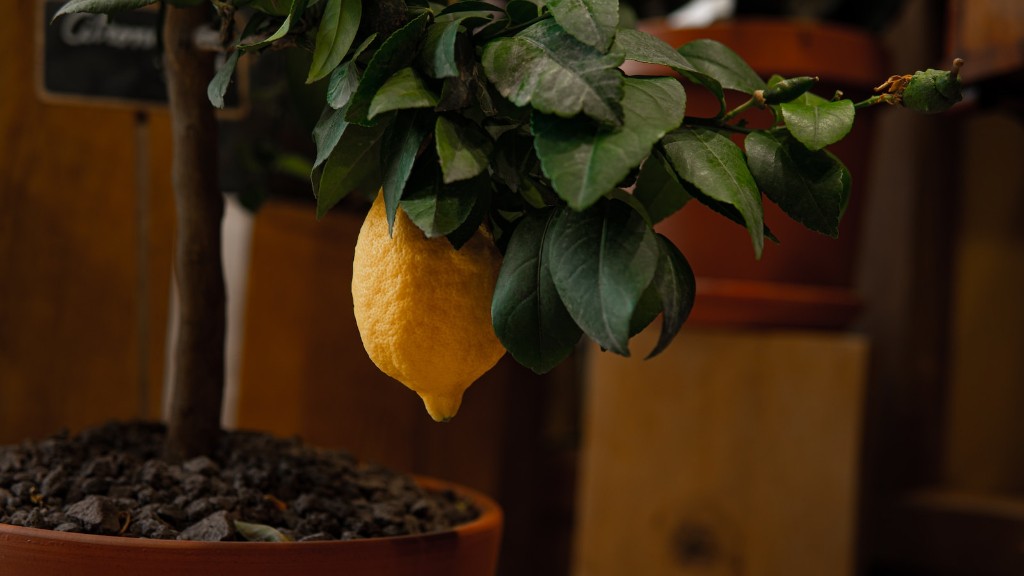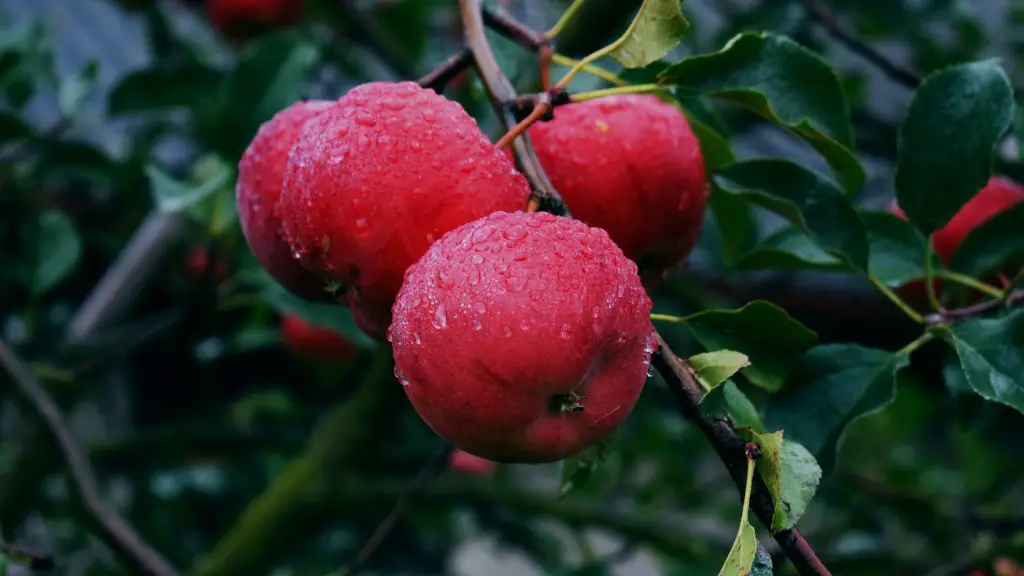Growing a lemon tree quickly is a complicated task, yet one that can be achieved with the right understanding and technique. The process involves adequate soil preparation, ample sunlight and adequate irrigation. It also involves scouting for pests, controlling the root growth, and fertilizing the tree. A combination of these elements will ensure the most robust growth for your lemon tree.
Soil Preparation
To properly prepare soil for a lemon tree, firstly identify the soil type. The soil should be loamy and friable. If the soil is already loamy, try adding in some organic components such as manure, compost, and mulch. If the soil is more sandy, add more clay and silt to amend the soil for better suitability. Be sure to analyze the soil’s pH level to ensure that it is not too acidic nor too basic by using a pH meter. A desirable pH level should range between 6 and 7.5.
Sunlight
The lemon tree should have access to full sunlight in order to survive and thrive. If a sunny location is unavailable, then the tree should be supplemented with grow lights. The lights should be placed 18-24 inches away from the tree and should be shone on the tree for 12-16 hours daily. When growing the tree outdoors, choose a location that has an east or west orientation. Doing this will ensure the tree will receive morning and afternoon sun.
Irrigation
Having the correct level of irrigation is paramount for the health of lemon trees. Too little water will cause the tree to wilt, and too much water will lead to root rot. Water the tree once a week for about 40 minutes, with a volume of about 4 gallons for every foot of diameter. Make sure the root zone does not become overly saturated and inspect for any signs of water distress.
Pest Control
Keeping lemon trees away from pests should be a top priority. If red spider mites or aphids have been seen on the tree, draper it with a protective cover to reduce contact with the pests. Spray the tree every three days using a mixture of 20ml Neem oil and 1 liter of water. Doing this will keep the pests away and also help to protect the tree against fungi and diseases.
Rootpruning
If the lemon tree is placed in a pot, the tree’s roots should be pruned every three to four years. This prevents the roots from clumping in one area and helps promote strong, healthy root growth. To prune the roots, remove the soil from around the root zone and then prune back any circling roots. This will also help to ensure that the roots are adequately spread out so that all parts of the tree can receive nutrients.
Fertilizing
Fertilizing the lemon tree is important for the tree’s growth. Apply a balanced fertiliser with an NPK ratio of 8-8-8 evenly around the tree and water it in after application. For trees located in pots, use a slow release fertiliser to reduce the need for frequent application, and supplement it with liquid feeds as well. Feeding the tree should be done in the beginning of spring and keep in mind that it should also be done a few weeks before and a few weeks after fruiting.
Soil Preparation
Soil is the foundation of any planting or gardening effort, and a lemon tree is no exception. Before planting the tree, make sure that the soil is well-drained, friable and loamy. If soil amendments are needed, blend in some compost or manure to increase the fertility of the soil. Test the soil pH level with a pH meter to make sure it is not too acidic nor too basic, which should range between 6 and 7.5.
Sunlight
Lemon trees require full sunlight in order to thrive, so try to find the sunniest spot available in the garden. If that’s not possible, consider setting up some grow lights to supplement the light for the tree. When setting up the grow lights, make sure to place them 18-24 inches away from the tree and to switch them on for 12-16 hours daily. Moreover, when planting directly in the ground, choose a location with an east or west orientation.
Irrigation
Irrigation is necessary to keep a lemon tree healthy and strong. Generally, water the tree once a week for about 40 minutes with a volume of 4 gallons for every foot of diameter. Make sure to provide the appropriate amount of water, as too little or too much water could damage the tree. Furthermore, monitor for any signs of water distress that may occur.
Pest Control
Pests can easily ravage a lemon tree, so it is important to take preventive measures to protect the tree. Have a couple insecticidal sprays on hand to treat any pests that may be seen on the tree. A combination of Neem oil and water is effective, and should be sprayed on the tree every three days to keep pests away. Consider draping the tree with a protective cover to reduce contact with pests further.
Rootpruning
If a lemon tree is planted in a pot, it is important to monitor its root growth. In order for the tree to develop the fullest potential, prune the roots every three to four years to prevent them from becoming overly congested. Remove the soil from around the tree’s root zone and prune back any circling roots to promote healthy root growth.
Fertilizing
Additionally, applying a balanced fertilizer regularly can help the lemon tree grow and develop better. Choose one with an NPK ratio of 8-8-8 and apply it evenly around the tree. For trees located in pots, a slow-release fertilizer is ideal and can be supplemented with liquid feeds to support the tree’s nutritional needs. Lastly, fertilize the tree in the beginning of spring, and a few weeks before and after fruiting.



